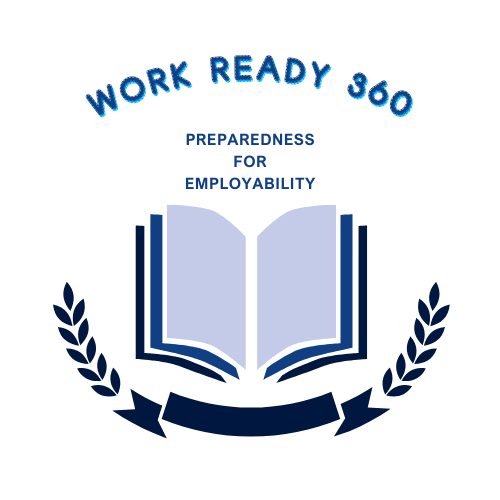CV Format: The 2025 Guide to a Professional Curriculum Vitae (with Examples & Expert Tips)
Your Curriculum Vitae (CV) is often your first and most critical introduction to potential employers. In today’s competitive job market, simply listing your experience isn’t enough.
The format of your CV can significantly impact whether a recruiter takes a closer look or moves on to the next candidate. This comprehensive guide will walk you through the key CV formats and provide actionable formatting tips to ensure your CV stands out in 2025.
Why a Strategic CV Format is Non-Negotiable
● Instant Credibility: A well-structured CV conveys professionalism and attention to detail from the first glance.
● ATS Optimization: Many companies utilize Applicant Tracking Systems (ATS) to scan and filter applications. Choosing a compatible format ensures your CV is accurately processed.
● Highlighting Your Value: The right format strategically emphasizes your most relevant skills, experience, and achievements for the specific role you’re targeting.
● Improved Readability: Recruiters are busy. A clear and organized format makes it easy for them to quickly locate the information they need.
The Core CV Formats
- Reverse-Chronological:
○ The Breakdown: This is the most widely accepted format globally. It emphasizes your career progression by listing your most recent roles and educational experiences first.
○ Ideal For: Individuals with a consistent and progressive work history.
○ Key Sections (typically in this order):
■ Contact Information (Full Name, Phone Number, Email Address, LinkedIn Profile URL – optional but recommended)
■ Professional Summary/Personal Statement (A brief overview of your key skills, experience, and career goals – tailor this to each job)
■ Work Experience (Job Title, Company Name, Location, Dates of Employment, Bullet points detailing responsibilities and, crucially, quantifiable achievements)
■ Education (Degree Name, Institution Name, Location, Graduation Date – list most recent first)
■ Skills (A dedicated section listing relevant hard and soft skills)
■ Optional Sections (Languages, Certifications, Volunteer Experience, Publications, etc. – include if relevant to the job)
Tip: “Use action verbs at the beginning of each bullet point in your experience section to describe your accomplishments.”
- Functional (Skills-Based):
○ The Breakdown: This format prioritizes your skills and abilities, grouping your experience under relevant skill categories. Your work history is usually listed separately but with less detail.
○ Ideal For: Career changers, individuals with gaps in their employment history, or those whose skills are more directly relevant than their specific job titles.
○ Key Sections (order may vary):
■ Contact Information
■ Professional Summary/Personal Statement (Focus on transferable skills)
■ Skills (Organized into 3-4 key skill areas with bullet points showcasing your abilities and accomplishments within each)
■ Work Experience (Job Title, Company Name, Location, Dates of Employment – listed more briefly)
■ Education
■ Optional Sections
Tip: “Focus on showcasing how your skills align with the requirements of the job description.”
- Combination (Hybrid):
○ The Breakdown: As the name suggests, this format blends elements of both reverse-chronological and functional CVs. It typically highlights key skills upfront, followed by a detailed reverse-chronological work history.
○ Ideal For: Professionals who want to showcase both their core competencies and their career progression.
Key Sections (typical order):
■ Contact Information
■ Professional Summary/Personal Statement (Emphasizing both skills and experience)
■ Key Skills (A section listing your most relevant skills)
■ Work Experience (Detailed, reverse-chronological)
■ Education
■ Optional Sections
Mastering CV Formatting:
Beyond choosing the right format, consistent and professional formatting is crucial.
● Keep it Concise: Aim for one to two pages. Be ruthless in cutting unnecessary information.
● Font Choice Matters: Opt for professional and readable fonts like Arial, Calibri, Times New Roman, or similar. Maintain a consistent font size (10-12 points).
● Strategic Use of White Space: Don’t overcrowd your CV. Use margins and spacing to create visual breaks and improve readability.
● Consistent Structure: Use consistent formatting for headings, subheadings, bullet points, and dates.
● Action-Oriented Language: Begin bullet points describing your responsibilities and achievements with strong action verbs.
● Quantify Your Impact: Whenever possible, use numbers and data to demonstrate the results of your efforts (e.g., “Reduced customer churn by 15%”).
● Tailor to the Job: Customize your CV for each application, emphasizing the skills and experiences most relevant to the specific role.
● Proofread Meticulously: Errors in grammar and spelling can be a major red flag. Proofread multiple times and consider asking someone else to review it.
● Save as PDF: Unless the job posting specifically requests another format, always save your CV as a PDF to preserve formatting across different devices and systems.
Choosing the Right Format for You in 2025
The best CV format isn’t universal; it depends on your individual circumstances, career stage, and the specific jobs you’re applying for. Carefully consider your strengths and the requirements of the roles you’re targeting to make an informed decision.
By understanding these core CV formats and implementing effective formatting techniques, you can create a compelling document that captures the attention of recruiters and significantly increases your chances of landing an interview.
Source: Based on information from “Curriculum Vitae (CV) Format (Example Plus Formatting Tips) | Indeed.com”
Source: https://www.indeed.com/career-advice/resumes-cover-letters/cv-format-guide

